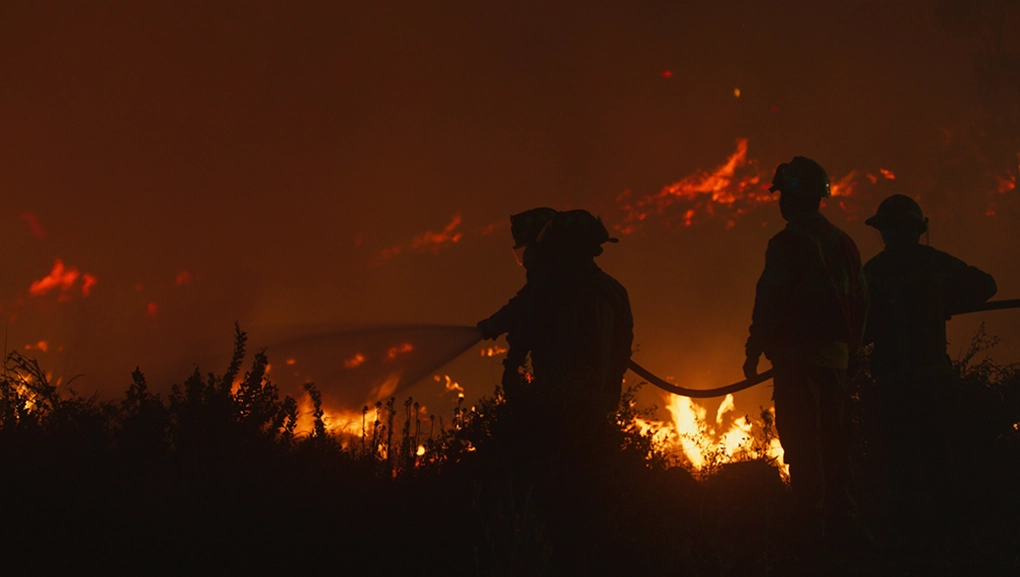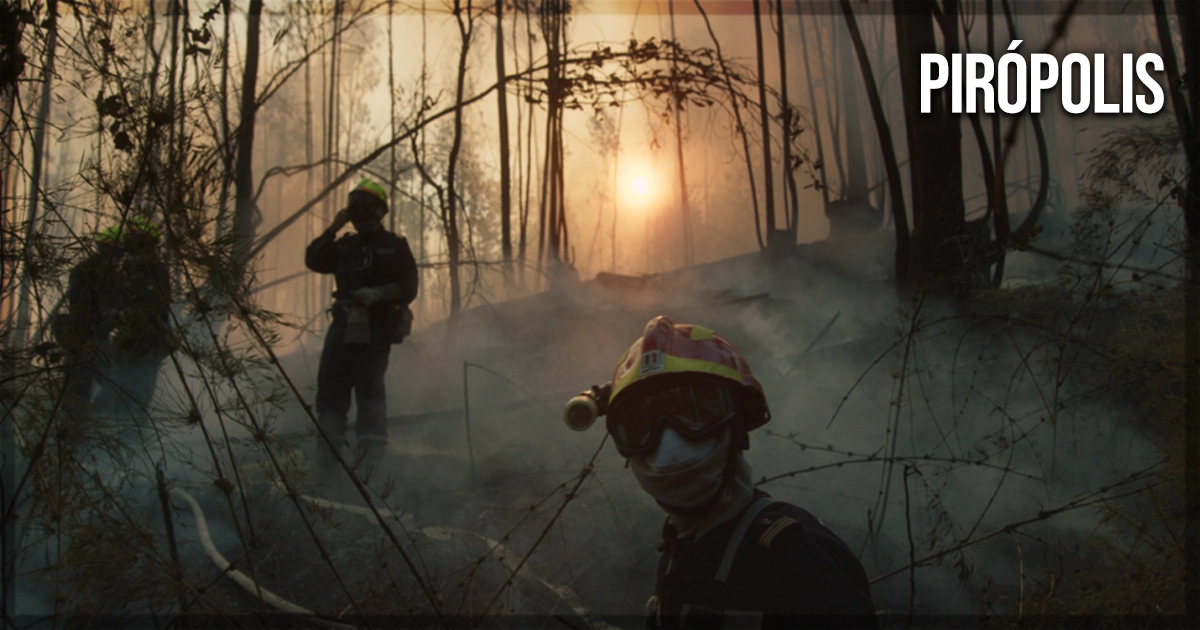In February 2024, a wildfire in Chile was initiated by a firefighter and a forestry worker in the Valparaíso region, around seventy-five miles (a hundred and twenty-two kilometers) from Santiago, the country’s capital. It went on to kill around a hundred and thirty-seven people, and it is one of the deadliest fires in the country’s history. The region, famous for its port and UNESCO’s World Heritage Site status, suffers now from droughts and immense fires boosted by global warming. Set in Valparaíso, Pirópolis follows the local firefighters in three different moments.
A fire brigade with international training
The film opens with the encounter of Valparaíso’s brigade, “Pompe France,” with Baptista, a French instructor who traveled to Chile to teach the local corporation how to fight the wildfires in their woods. Lacking infrastructure, the corporation has to put much effort into acting in a port city that is considered flammable. The interaction between the tutor and the local pupils shows immense respect and eagerness for learning. It is pretty nitid how they suffer with the fires increasing each year.
Baptista is responsible for teaching them techniques used in the French corporations during the incendiary events. For example, he shows them how to put out a fire with three hundred liters of water, which lasts about three minutes. These techniques are fundamental, as Pompe lacks professionals and support. The residents’ firemen state that eucalyptol is the ignitor of the fire and that it makes things even worse. Besides the technical changes within the group, there is also a social shift, and they are looking to accept more women. It is an attitude that most commandants and high-level captains rejected in the recent past. The group ends up reflecting on how the world is changing around, and it cannot get behind that.

Molina captures the fires in the woods and the protests on the streets
The second part, which happens between the training and the aftermath of the instructions, is the 2019 fight against Chilean societal protests for the change of their constitutions. Between October 2019 and March 2020, Chile’s population went out to the streets to demand a new constitution, the last made during Augusto Pinochet’s dictatorial government in 1980. Director Nicólas Molina’s lenses assume an observational factor of documenting the fires within the woods and on the streets. Popular organizations and anger for the country’s current state made them initiate a societal change. It is visually impressive to accompany the protests while Molina’s unquiet cameras try to keep track of the actions and simultaneously hide from the state’s violence towards the demonstrations.
It is the action that Pirópolis finds its most engaging moments. For most of its development, the camera is in a distant place, only documenting, reminiscent of the Cinema Verité approach. Even though it is visually well-composed and fascinating to look at from a scenic point of view, it lacks the substance to make the viewer participate in the story. From a visual standpoint, it is a gorgeously crafted work. There is plenty of slow-burning wood. Quietly, he pauses to observe the fire devouring the trees. Also, some of the aerial moments, when planes throw water to stop the fires, are of an impressive scale, which, just by observing, can capture a magnetic image.
Lastly, the aftermath of the training reflects the two previous parts. While the corporation awaits a new leader, the firefighters converse about Chile’s political state, the constitution, which is only approved now, and the new policy of having more women in the corporation. It is quite an interesting conversation, but it does not follow a line of debate, and the observance aspect of the directing disperses it a bit.
Final thoughts on Pirópolis
It is a film of ups and downs. The moment when the viewer is invited to look at the devastating power of the fire is intriguing, but it can last longer than necessary. Furthermore, composition is the film’s highest virtue. Added to the excellent sound design work, it is an immersive and sensory experience. On the other hand, the film needs to focus more on the corporation’s people and the details of who they are. As a theater play, characters come and go, but we must understand those people on the screen differently than on the stage.
Pirópolis captures an increasing problem associated with Global Warming. Hundreds of people are dying, animals are suffering and losing their habitat, and workers are overworked and underfunded. It has its moments when it focuses on the social incentives within Chile, such as the protests for political changes and women in firefighters corporations. However, it has no complete focus and may feel dispersed most of the time.
Pirópolis recently premiered at the Tribeca Film Festival.
Learn more about the documentary at the Tribeca site for the title.


